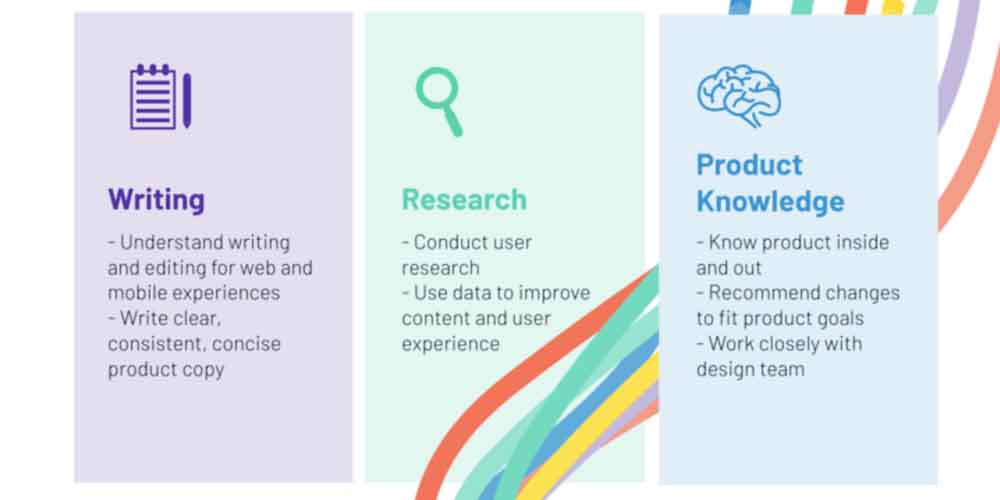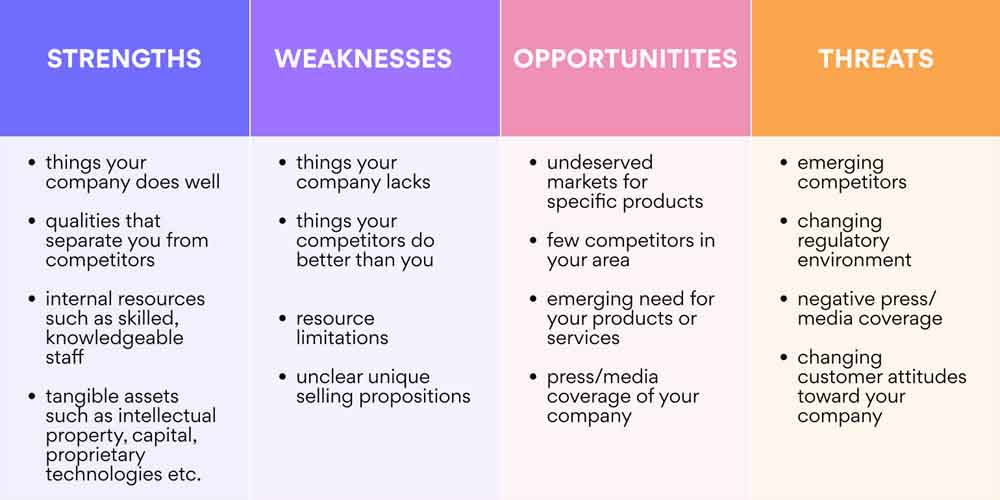Everything you read when using apps is meticulously planned and written by UX experts who seek to provide crucial information about how to use those applications. In other words, everything you see on the screen when using the app has a reason and aims to enhance your user experience and usability.
Everything starts with the UX Writing Process, a series of steps you should follow to complete the task of building great UX content. Let’s explore the depths of user experience writing and how to get the best writing done.
What Is UX Writing?

Source: Uxcam
UX writing compasses all the content readers and customers interact with when they use a digital product, regardless of its nature. Still, UX writing is more than just writing short data and clarifying sentences that provide particular information. When you write copy of this nature, you help potential clients navigate through the user journey easily and seamlessly, just by providing the exact data to complete a conversion within the product.
But UX Writing is not easy, despite the fact that most people think it’s just creating content. It requires another level of commitment, communication, and understanding of the project and products. The result, the UX Copy, must respond to all the product’s requirements, concepts, and benefits. This is when the UX writer comes to the scene.
What Is the Role of the UX Writer?

Source: Technicalwriterhq
UX writers are responsible for the UX writing experience. In general, they are professionals who are committed to achieving the best UX design and communicating all the product’s benefits and features.
Moreover, the UX writer often participates in the process of creating the product and the concept behind it, taking part in creative team meetings. This person is usually a designer with extensive UX copy and copywriting experience. Besides, the writer should be aware of all the documentation that Product Managers, Designers, Developers, and other professionals create during the design process.
In many cases, the writer is completely in charge of the writing copy and contributes to the creation of visuals by participating in the design process with the design team. This way, the professional can create UX copy according to the product’s “soul,” concept, and straightforward benefits.
What Is a UX Writing Process?

The UX writing process is the action that the UX writer carries out to create the UX copy from the very beginning to the publishing of the content.
Just like the UX design process – which involves visuals, fonts, colors, and other visual factors – and any content strategy, this process entails several steps that the writer should complete to achieve their objectives successfully.
In general, this process is a coming-and-going process characterized by constant communication with other departments of the business. This way, the writer makes sure that the UX copy reverberates with the product made by the product designers.
Steps Involved in the UX Writing Process

Source: Maze
Let’s go directly to the most important part of this article, which describes the steps involved in the UX writing process.
- Analyzing and Understanding the Project

Source: Springboard
Before any project begins, there are usually kickoff reunions or meetings to deliberate and communicate general ideas and concepts. The meetings involve stakeholders and other participants who contribute to the product from different perspectives.
A product manager leads these meetings and will put over the table the following questions:
- What kind of product or features are we creating?
- Why are we creating this product/feature?
- What are the necessary features and characteristics that the product should have?
- What are the product implications?
- How can we communicate the benefits and features in the best way possible?
- How long does the product design process take?
The writer, attempting to meet all these requirements, should understand the current scenario and what the design team wants to communicate. This practice is especially important for digital products that are more immaterial.
In this stage, the UX writer should be able to understand what features they must communicate according to the part of the user journey they will address.
- Researching and Analyzing Direct Competitors

Source: Arounda.agency
Okay, now that you know what to communicate—or at least you have a general idea of the main features you should reflect—you should carry out deep research and competitive analyses of the market, direct competition, and other similar products existing on the market. This way, you will analyze the wide spectrum of possibilities existing online. Some common research methods are these:
- Interviews.
- Surveys.
- Focus groups.
Besides a complete analysis and research of the competitors—the terminology they use, how they build the visuals, and the impact they generate—you should deploy user research. It means you should analyze the target audience, how the users use the user interfaces, and how the user interacts with the product. If you have various apps or products, you should do it in each of them.
The writer should also analyze each piece of user feedback the company or brand has received in the past and its context. Analyzing this data will provide wider insights into the user experience, enabling you to create the best UX copy for each stage of the user journey.
- Sketching Ideas

Source: Uxknowledgebase
Now, it’s time for the creative process. At first glance, it should seem that you only have to use words to start sketching ideas. However, you should also use visuals and images and imagine how the UX copy will fit an alleged future image. In other words, it should be a total integration between both components, and you, as a UX writer, should brainstorm when ideating sketches to have a wide range of possibilities.
You should also regularly review the wireframe of the design you’re working on. This means examining how the UX designers have outlined the user journey and translating that into words to convey what designers and developers aim to communicate.
- Creating and Reviewing a Prototype

Source: Mindinventory
At this point of the UX writing process, you should have many ideas, sketches, diagrams, drawings, drafts, etc., about what you want to reflect through your UX content design. The idea now is to use all the sketches you have to create a prototype—indeed several prototypes—to address the end user in different stages of the user journey, from the first approach to the final product.
How does it work?
You should implement the UX copy you have created inside the visuals that the designers have provided you. Of course, you probably have created your own, and you should also use them when building the prototypes.
Moreover, implement the UX copy in the website—or websites—in an alpha version to see how it looks in a “real” version. This action will undoubtedly help you—the writer—and visual designers and developers visualize and improve images by seeing the complete panorama of visuals.
- Refining and Improving the Copy

Source: Flexiana
Once you have the final versions of the UX copies in your hands—and after a proper review from you and the designers—you should polish and refine them to make sure that you have the best version possible for the site or application.
This step is to prepare UX copies that truly help the customer during the user experience journey. It is also the perfect time to test the copies in every sense, for example, from the content and visual perspective.
It is also the right moment to ensure clarity in your communication. Try to collaborate with the other brand professionals to check possible changes and edit the copy in the subsequent steps.
Keep in mind that reviewing and polishing is a continuous process that you and other stakeholders will carry out. In this step, designers and developers should also give you some answers about the stage of the user journey they want to communicate if it is not clear yet.
- Creating the Document

Source: Linearity
Finally, with all this information ready, it’s time to create the final document.
When you finish creating the document, you must share it with other participants for final approval. It’s also important to document your work and even the resources you’ve used to create it during the UX writing process. It is really important to avoid errors in the next UX processes and even gain knowledge about the entire practice. This way, when returning to the first step, you will have a wider perspective of what you need to do.
The final document should be in impeccable condition and perfectly reflect the product’s features, characteristics, pros, and benefits. You should also prepare a presentation or written document to present to the organization’s members.
Best Practices During the UX Writing Process

Source: Vilmate
UX writing is more of an art than a science. Hence, you can learn to do it correctly with best practice of ux writing, repetition, study, and some critical tips. Below, you will find a quick overview of the most recommended advice we can give you.
- Be Straightforward and Concise
UX writing is not literature. You’re not writing a novel or a short story; you’re communicating a marketing message. Therefore, you must use UX writing to inform customers about the user journey most effectively and directly.
Regardless of the complexity of the user journey or the technical details you need to describe, strive for simplicity. Stick to using keywords and offer direct answers to common misunderstandings or issues. And please, do not write UX copy with excessive min read.
- Use a Consistent Tone of Voice Throughout the Entire Copy
Just as with other types of writing—content writing, SEO writing, even literature—consistency is key when writing, which means using similar vocabulary, tone, structure, length, and other aspects.
It’s important to use a consistent voice throughout the document. In this manner, the writer builds trust by providing a solid document that leaves no room for doubt.
Define the best tone for your UX content. Every UX document should have a unique flow and language according to the product’s needs, benefits, and features.
- Use an Active Voice and Avoid the Passive Voice
In general, a passive voice is not as direct and efficient as an active voice. The latter uses strong verbs that aim to action and push users to complete an action.
Your mission should be to explain to the user what to do directly and without hesitation and invite them to execute what you’re explaining. The best for these purposes is to provide clear instructions and steps to ensure the journey and that the users solve the issues.
- Use a Plain Language
Since your job is to communicate the ideas of the UX design process most straightforwardly, you should use plain grammar and syntax, trying not to overcomplicate the UX document. The language used should optimize the message just by using easy-to-understand phrases and words, not trying to confuse the user. It’s also essential to use precise language and no flashy words.
- Hire a Professional Marketing Agency that Help You With Writing

If your business has multiple apps and you’re feeling overwhelmed by the amount of UX copy needed, consider partnering with a professional marketing agency like GamerSEO. Our experienced writers and designers will analyze your organization’s products and craft top-notch UX copy for you, ensuring that your app users receive clear and engaging content that enhances their overall experience.
Since the members of GamerSEO know the importance of UX content and the features of the client’s products, they are committed to reflecting relevant information in the clearest way possible. Contact us through our contact form to discuss everything concerning your project or brand!
The Bottom Line
Thank you for reading until this point in the article! We hope you enjoyed the advice we’ve given you. Of course, you can always develop your methods to create UX copies—there are probably as many methods as writers—but the tips above will help you to pull off the best of your mind and pencil!
Please remember to read the other articles we continually upload to our blog, in which we discuss other aspects of the UX writing examples, marketing strategies, process, case studies. It is also worth familiarizing yourself with the principles of good ux writing. Our blog is a really useful tool for developing your skills!

Visual artist, professional writer, and senior content creator specializing in digital marketing and copies that resonate with readers and users. For more than eight years, he has provided significant contributions to companies interested in positioning their brands and products by creating marketing strategies and high-quality content based on SEO. His writing ranges from construction and architecture to gaming and cryptocurrencies, including sales, investments, travel, and more. Currently, he participates in several Spanish and English companies, proposing, planning, and delivering unique copies. Football player twice a week, a published author, and a fan of the Final Fantasy series.

